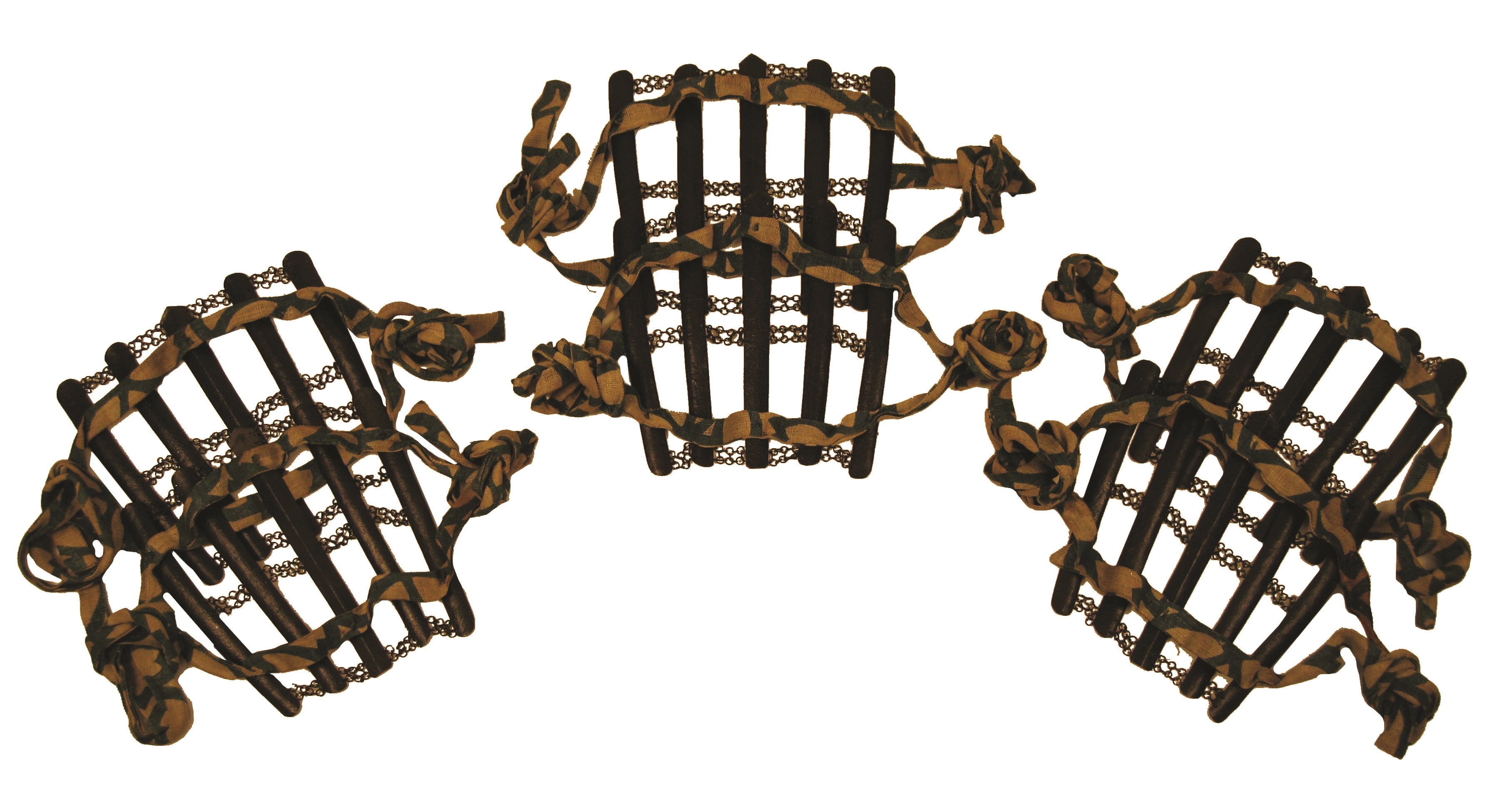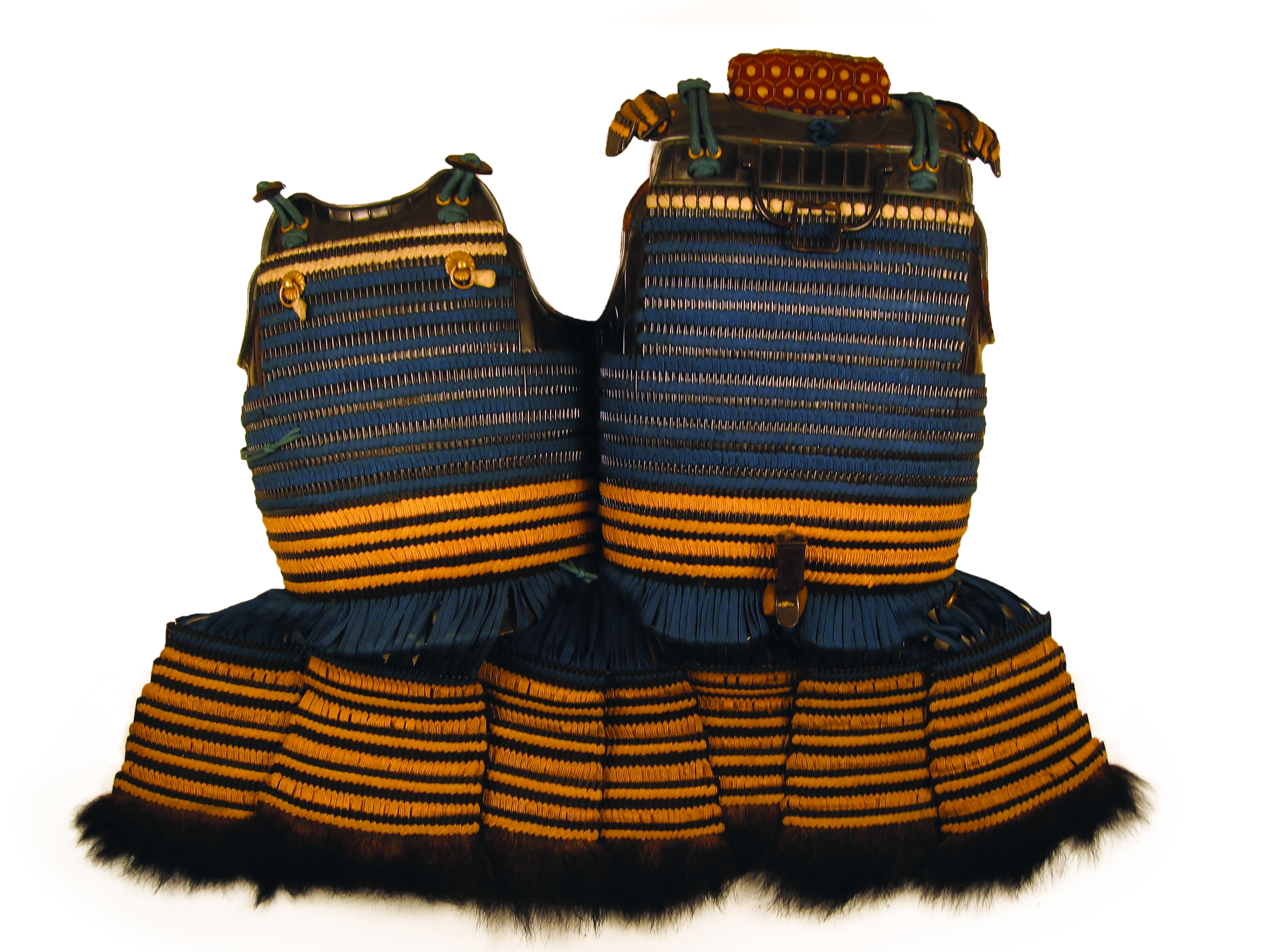From the early history of the samurai, to the evolution of the armour protecting the samurai's chest, Volume I of Trevor Absolon's Samurai Armour is a beautfully designed and illustrated book looking at the incredible aesthetic and strength of the protection worn by the military nobility in medieval Japan.
Today on the blog we welcome Trevor as he discusses his 20-year study of samurai armour and his journey into writing this new two-part series.
When I first became interested in samurai armour in the early 1990s, one of the great frustrations I had was finding reliable reference material on this subject matter. As a student of many of the great conflicts of Western civilization, such as the Napoleonic Wars, the Great War and World War II, I had become accustomed to the easily available and seemingly endless collections of literature that documented these historical events.
While a great number of books about the samurai existed, those that focused specifically on the subject of the armour they wore were rather scarce, and of these, the vast majority of them were re-hashes of the books that had preceded them to print. Irrespective of this fact, I bought every book related to this subject that I could lay my hands on, including those written in Japanese, a language that I ultimately became quite proficient in.
Sadly, as my personal library and understanding of this unique subject matter grew, I began to find that even the most reliable of my reference sources were increasingly unable to answer the questions I had. I also found it extremely frustrating having to flip through many dozens of books in a vain effort to find those answers. What I increasingly found myself wishing for were a couple of highly detailed and in-depth non-Japanese language books that were specifically focused on ancient and feudal period items of samurai armour. And as no texts of this kind existed to my knowledge, I set out to make them.
Thus started an almost three decade long saga, that ultimately resulted in this book, volume one of two books that focus specifically on Japanese armour.
 A posed image of late 19th century Japanese curio shop.
A posed image of late 19th century Japanese curio shop.
This book, volume one, focuses primarily on the various forms of cuirass, or dō, that the samurai utilized over the centuries, with the other major components such as the kabuto helmet, menpo face mask et cetera forming the subject material for volume two. However, it is impossible to fully understand the items of armour that were utilized by the samurai without having some understanding of how these renowned warriors evolved, who they were, and of course how they fought. Thus the text begins with an in-depth look at the various ethnic groups who metamorphosed into the warriors that we now know as the samurai over the course of the first millennium AD.
As the history of the samurai throughout the course of the second millennium has been covered in great detail in a number of excellent books, the bewildering array of historical events and important characters of feudal Japanese history from the 10th century onward are for the most part only briefly touched on in this text, with the exception of those events and personalities who played a significant role in the evolutionary development and design of the forms of armour that were utilized by the samurai between the 10th and 19th centuries.
The reason for the focus on the dō is that Japanese sets of armour are identified by the form of the cuirass that they were assembled around. Thus to master the subject of Japanese armour, one must first understand the various forms of dō. To help students comprehend this otherwise bewildering subject, the reader is first introduced to the fundamental forms of cuirass and their various components. The reader is then walked through the evolutionary development of each individual form of cuirass and their various off-shoots in chronological order of their appearance on the historical stage.
To truly master the subject of samurai armour, however, one must also learn to utilize the Japanese terminology associated with these items. For example, the term greaves should not be used to describe the protective armour coverings for the shins when the Japanese term, suneate, exists to describe these parts. Likewise, referring to the suneate as ‘the shin guards from a set of samurai armour’, is the equivalent of referring to sushi as ‘pressed, vinegar soaked rice with a seafood garnish’. While explanations are required, failure to utilize the correct indigenous names for these items will ultimately handicap any serious effort to develop a sound understanding of this unique subject matter. For this reason this text relies heavily on the proper Japanese terms for the items of armour being discussed, each of which is introduced and explained as they are encountered. This allows the reader to slowly build up an understanding and confidence in the usage of these terms throughout the course of the text. This process is aided by the fact that a considerable portion of the required terminology tends to build upon itself, the terms being related and often somewhat redundant in nature.

Three identical pairs of okashi-shin-zunate (shin guards).
This book also delves into the minutiae of Japanese armour construction and design. For again, a proper understanding of these items can only be achieved when every aspect of these items has been discussed. Thus unlike the generic overviews that are typical of most books on samurai armour, this text not only discusses what the various forms of armour looked like on the outside, it also introduces the reader to how these items were finished on the mostly unseen inside surfaces and the materials in between. As such everything from the fabrics and materials that were used to assemble items of armour and how these were prepared, to how dō were constructed and the logic behind their various designs are discussed in detail, as are many of the other independent component part pieces that were commonly utilized in association with a cuirass, such as flag-holders, armpit guards and some of the other various auxiliary forms of protective armour.
To help the reader better understand and visualize the items being discussed, each chapter is accompanied by a huge array of images of various authentic items of samurai armour. One of the refreshing aspects of these images is that the vast majority of them are of items of armour that have never before appeared in print. They are also unique fact that many of them were selected for the simple fact that they highlight the fine details or other commonly overlooked or even largely unknown aspects of samurai armour, such as how these items were constructed and the materials that were employed in their fabrication.
Aside from some of the largely unknown aspects of the evolution of the samurai, this book also delves into a number of other subjects that have hitherto largely gone undiscussed, such as the influence of foreign-made mail armour on the Japanese and the fact that the most common forms of armour worn by the samurai during the final centuries of their long military reign over Japan were items that utilized mail, or kusari, as the primary form of protection. The historical events and influences that dictated the evolutionary changes in armour construction and design, such as the introduction of new weapons and tactics, to the influence of firearms and even Western forms of armour design are just some of the key discussions that are reviewed in considerable detail in this text.
One of the other objectives of this book and its companion volume is to do away with some of the incorrect historical beliefs and information that exist in regards to the samurai and the items of armour that they wore. While a large amount of this misinformation can be directly attributed to many of the self-serving myths that were created by the warrior class itself, it is unfortunate to note just how much our present-day understanding of these items continues to be based upon bogus information that has been regurgitated over the past century and half in both domestic Japanese and, to a larger degree, in Western literature on this subject.
 An example of kebiki odoshi laced ni-mai-dō.
An example of kebiki odoshi laced ni-mai-dō.
I am confident in the fact that this book takes the study of Japanese armour to a new level. In saying this I’m also cognizant of the fact that much of what I know has been derived from the knowledge of others, including numerous other authors who have gone before me down this road. And to them I am of course thankful. That said, I cannot disregard the bizarre quirks of fate that somehow aligned to make me one of the small handful of individuals of my generation to have established a deep understanding of this unique subject. Having lived almost half of my adult life in Japan, I was ideally positioned to indulge myself in this unusual field of study. Backed by my proficiency in the Japanese language and my eventual career as a dealer in Japanese armour, I was over the course of many years able to study several thousands of authentic pieces of Japanese armour first hand. This knowledge and experience, backed by personal study under some of the most renowned samurai armour scholars in Japan, along with my many-year-long participation in the oldest authentic samurai festival still held in Japan, the prestigious Soma Noma-oi, where I wore samurai armour while mounted during the various stages of this rigorous three-day historical event, has in my opinion qualified me to write about this subject matter with a reasonable degree of confidence.
And while I again recognize the fact that many others almost certainly may equal or best me in my understanding of this unique and incredibly interesting subject matter, such information is sadly wasted in my opinion if those who hold it fail to pass it along. Thus my goal in presenting this book is to empower following generations of enthusiasts with the knowledge that through trial and error and a considerable degree of dogged determination took me decades to amass. For ultimately, I hope that in sharing this information, it will help to ensure the long term preservation of these fabulous works of functional military art from Japan’s feudal period.
To read more about the astonishingly beautiful and intricate pieces of armour, you can pre-order your copy of Samurai Armour by clicking the link here.

Comments
You must be logged in to comment on this post. Click here to log in.
Submit your comment